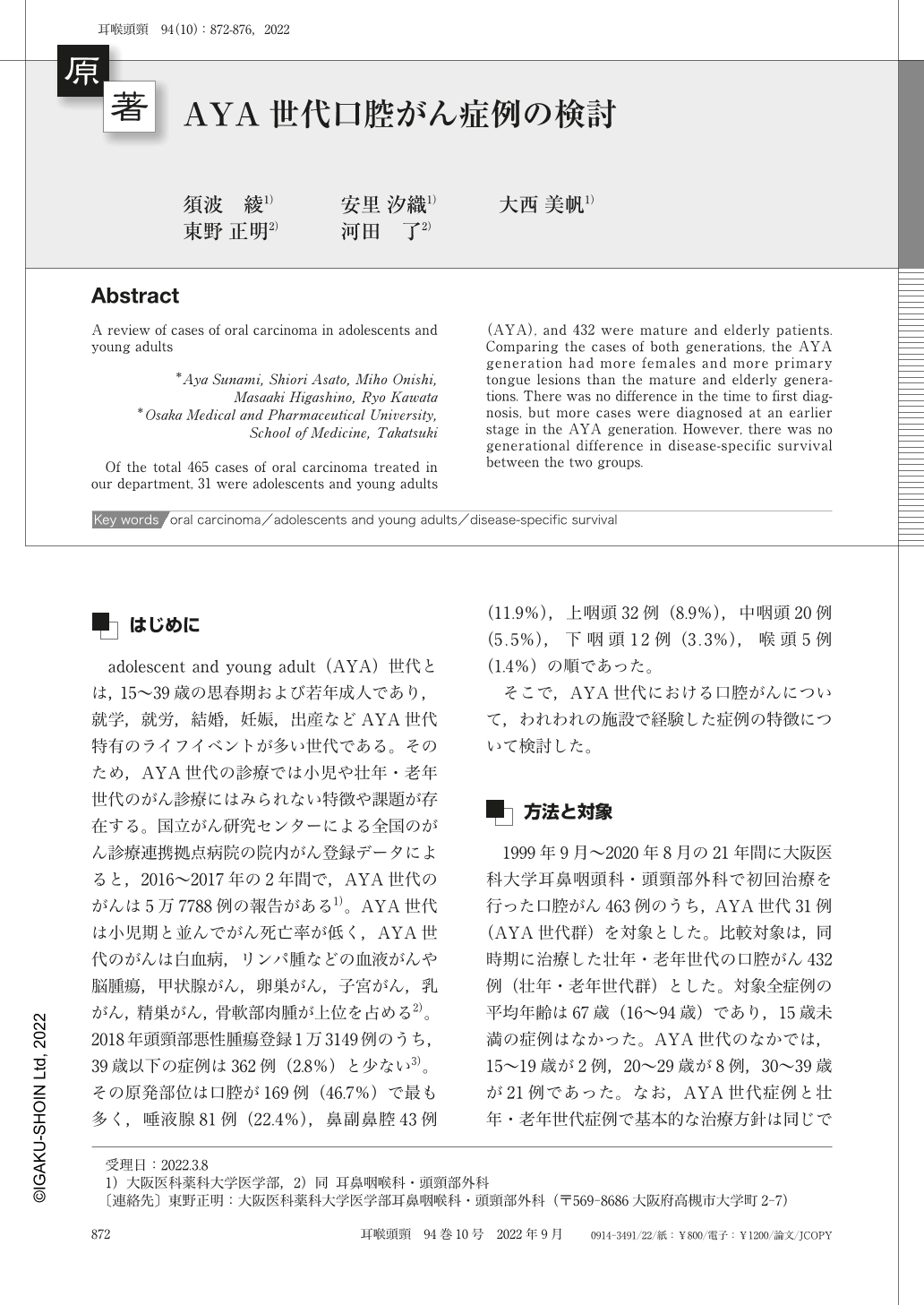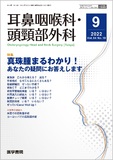Japanese
English
- 有料閲覧
- Abstract 文献概要
- 1ページ目 Look Inside
- 参考文献 Reference
はじめに
adolescent and young adult(AYA)世代とは,15〜39歳の思春期および若年成人であり,就学,就労,結婚,妊娠,出産などAYA世代特有のライフイベントが多い世代である。そのため,AYA世代の診療では小児や壮年・老年世代のがん診療にはみられない特徴や課題が存在する。国立がん研究センターによる全国のがん診療連携拠点病院の院内がん登録データによると,2016〜2017年の2年間で,AYA世代のがんは5万7788例の報告がある1)。AYA世代は小児期と並んでがん死亡率が低く,AYA世代のがんは白血病,リンパ腫などの血液がんや脳腫瘍,甲状腺がん,卵巣がん,子宮がん,乳がん,精巣がん,骨軟部肉腫が上位を占める2)。2018年頭頸部悪性腫瘍登録1万3149例のうち,39歳以下の症例は362例(2.8%)と少ない3)。その原発部位は口腔が169例(46.7%)で最も多く,唾液腺81例(22.4%),鼻副鼻腔43例(11.9%),上咽頭32例(8.9%),中咽頭20例(5.5%),下咽頭12例(3.3%),喉頭5例(1.4%)の順であった。
そこで,AYA世代における口腔がんについて,われわれの施設で経験した症例の特徴について検討した。
Of the total 465 cases of oral carcinoma treated in our department, 31 were adolescents and young adults(AYA), and 432 were mature and elderly patients. Comparing the cases of both generations, the AYA generation had more females and more primary tongue lesions than the mature and elderly generations. There was no difference in the time to first diagnosis, but more cases were diagnosed at an earlier stage in the AYA generation. However, there was no generational difference in disease-specific survival between the two groups.

Copyright © 2022, Igaku-Shoin Ltd. All rights reserved.


